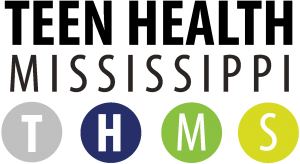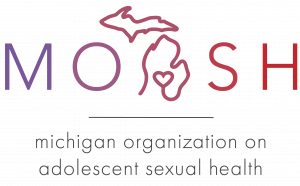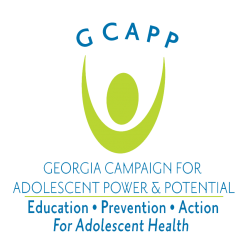Training
Cyberbullying: Recognizing Signs & Intervening
Participants will gain knowledge and develop skills required to recognize signs that a child may be a victim of cyberbullying and/or abusing someone through cyberbullying. Participants will practice using empowerment as an intervention to cyberbullying.
This training is designed for:
- Educators
- Teachers
- Substitute Teachers
- Counselors
- Coaches
- Parents
- Clergy
- Community Workers
- Healthcare Providers
- Healthcare Staff
- Clinicians
In person Online
Cost - $0.00 -$2500.00, depending on location of participating organization. Please contact us at contact@teenhealthms.org for more information.
Age Group(s) - Grades 6-8, Grades 9-10, Grades 11-12
Topic(s) - Healthy relationships
State(s) - Alabama,
Alaska,
Arizona,
Arkansas,
California,
Colorado,
Connecticut,
Delaware,
Florida,
Georgia,
Hawaii,
Idaho,
Illinois,
Indiana,
Iowa,
Kansas,
Kentucky,
Louisiana,
Maine,
Maryland,
Massachusetts,
Michigan,
Minnesota,
Mississippi,
Missouri,
Montana,
Nebraska,
Nevada,
New Hampshire,
New Jersey,
New Mexico,
New York,
North Carolina,
North Dakota,
Ohio,
Oklahoma,
Oregon,
Pennsylvania,
Rhode Island,
South Carolina,
South Dakota,
Tennessee,
Texas,
Utah,
Vermont,
Virginia,
Washington,
West Virginia,
Wisconsin,
Wyoming
Professional Learning Standards for Sex Education (PLSSE) Indicators
Healthy Relationships Indicators - Indicator 4 (K-12): Describe three strategies for incorporating the positive and negative impacts of communicating through technology into lessons on healthy relationships.
- Indicator 5 (K-12): Describe three ways to help students set and respect personal boundaries in relationships.
Training
Inclusive Sex Education for Expectant and Parenting Youth
Although expectant and parenting youth (EPY) express a need for sex education (contraception, healthy relationships, etc.), many programs are not adequately inclusive of EPY. This interactive training will help educators and service providers recognize the need for EPY inclusivity and support in pregnancy prevention programming and provide concrete strategies for implementation. We will discuss our experiences working with EPY from across the state and how their feedback helped us to develop a toolkit of strategies for adults working with EPY to ensure they’re being effective and affirming. We will also identify and demonstrate ways to alter our language choices related to young parents and interrupt common myths and stigma about teen parenthood, allowing EPY to better engage with the content in sex education programs. Finally, we will have a hands-on component where participants will analyze sample sex education curriculum and work in small groups to tailor the content to be more EPY-inclusive.
In this training, participants will:
- Gain an understanding of the needs of EPY, including those related to sex education.
- Review relevant and current data on EPY.
- Look at the relationship between pregnancy prevention initiatives and EPY.
- Discuss the creation and content of the Expectant and Parenting Youth Inclusivity Toolkit.
- Apply EPY inclusivity principles in reviewing and adjusting curriculum.
In person Online
Age Group(s) - Grades K-2, Grades 3-5, Grades 6-8, Grades 9-10, Grades 11-12
Topic(s) - Conscious and unconscious bias about race, ethnicity, and culture disclosure, Contraception, pregnancy, and reproduction, Creating an inclusive and affirming learning environment, Effective teaching strategies, LGBQ+ identities, Responding to challenging questions, Sex education in schools, Values
Professional Learning Standards for Sex Education (PLSSE) Indicators
Conscious and unconscious bias about race, ethnicity, and culture Indicators - Indicator 3 (K-12): Explain how an educator’s personal beliefs about racial and reproductive justice could influence their teaching of sex education.
- Indicator 4 (K-12): Describe three strategies to reduce the impact of conscious and unconscious bias and enhance cross-cultural interactions in the classroom when teaching sex education.
Contraception, Pregnancy, and Reproduction Indicators - Indicator 5 (6-12): Describe pregnancy options, including parenting, adoption, and abortion.
- Indicator 6 (6-12): Identify three federal and/or state laws that impact young peoples’ access to effective reproductive and sexual health care (e.g. age of consent for services, confidential access to health care services, and access to condoms)
Creating and inclusive and affirming learning environment Indicators - Indicator 1 (K-12): Demonstrate three techniques to create an inclusive and affirming learning environment. (S)
Effective Teaching Strategies Indicators - Indicator 3 (K-12): Explain the differences between positive vs. shaming approaches to teaching sex education.
- Indicator 7 (K-12): Demonstrate the ability to analyze and tailor lesson plans to match the age, developmental stages, cultural backgrounds, and other identities of students. (S)
LGBQ+ Identities Indicators - Indicator 4 (K-12): Demonstrate the use of inclusive and affirming language. (S)
- Indicator 6 (K-12): Explain three ways that LGBQ+ youth are at disproportionate risk for health disparities.
- Indicator 8 (K-12): Explain why it is essential to include positive portrayals of LGBQ+ people in lessons.
Responding to Challenging Questions Indicators - Indicator 2 (K-12): Demonstrate the ability to effectively respond to three different types of challenging questions. (S)
Sex Education In Schools Indicators - Indicator 1 (K-12): Describe three health (e.g. physical, social and/or emotional) and/or academic benefits of sex education for young people
- Indicator 2 (K-12): Describe state and/or district laws, policies, and standards that relate to sex education where one teaches.
Values Indicators - Indicator 1 (K-12): Explain the differences between personal and universal values relating to sexuality.
- Indicator 2 (K-12): Describe how verbal and nonverbal expression of personal values, and comfort with topics related to sex education, could impact one’s teaching
- Indicator 3 (K-12): Explain the importance of educators refraining from sharing their personal values when implementing sex education.
- Indicator 4 (K-12): Demonstrate the ability to respond effectively to students’ values-based comments and questions. (S)
Training
Coping Skills in the Classroom
Coping skills are strategies we use to manage unpleasant emotions, decrease stress, and establish order in our lives. They can be used in the classroom both by students and teachers. Participants will not only learn practical skills to use in their daily lives but also how to teach these skills to their students.
In person Online
Cost - Please contact alexandra@gcapp.org for details
Age Group(s) - Grades K-2, Grades 3-5, Grades 6-8, Grades 9-10, Grades 11-12
Topic(s) - Creating an inclusive and affirming learning environment, Effective teaching strategies
Professional Learning Standards for Sex Education (PLSSE) Indicators
Training
Engaging Commercially Sexually Exploited Youth in Conversations About Sexual Health
My Life My Choice (MLMC) and Planned Parenthood League of Massachusetts (PPLM) have merged their respective expertise in commercial sexual exploitation of children (CSEC) and sexuality education to create an evidence, trauma, and survivor-informed training designed to help a wide range of youth service providers use intentional and inclusive language to begin conversations with young people about sex and sexuality that reflects the realities of their lives. Application link here.
Online
Age Group(s) - Grades 6-8, Grades 9-10, Grades 11-12
Topic(s) - Consent and interpersonal and sexual violence, Contraception, pregnancy, and reproduction, Creating an inclusive and affirming learning environment, Disclosure, Effective teaching strategies, HIV and other sexually transmitted diseases/infections, Responding to challenging questions, Values
State(s) - Alabama,
Alaska,
Arizona,
Arkansas,
California,
Colorado,
Connecticut,
Delaware,
Florida,
Georgia,
Hawaii,
Idaho,
Illinois,
Indiana,
Iowa,
Kansas,
Kentucky,
Louisiana,
Maine,
Maryland,
Massachusetts,
Michigan,
Minnesota,
Mississippi,
Missouri,
Montana,
Nebraska,
Nevada,
New Hampshire,
New Jersey,
New Mexico,
New York,
North Carolina,
North Dakota,
Ohio,
Oklahoma,
Oregon,
Pennsylvania,
Rhode Island,
South Carolina,
South Dakota,
Tennessee,
Texas,
Utah,
Vermont,
Virginia,
Washington,
West Virginia,
Wisconsin,
Wyoming
Professional Learning Standards for Sex Education (PLSSE) Indicators
Consent, Interpersonal and Sexual Violence Indicators - Indicator 1 (K-12): Define consent.
- Indicator 2 (K-12): Explain why consent is a fundamental right for people of all ages.
- Indicator 3 (K-12): Differentiate between situations in which sexual consent is and is not present.
- Indicator 4 (K-12): Identify three youth-friendly resources to assist survivors of sexual assault, abuse, incest, or domestic violence.
- Indicator 5 (K-12): Explain sex trafficking and the state laws related to it.
- Indicator 6 (K-12): Explain bodily autonomy and how it relates to consent and sexual abuse prevention.
- Indicator 7 (K-12): Explain the impact of childhood trauma on the decision-making and sexual health of students.
Contraception, Pregnancy, and Reproduction Indicators - Indicator 3 (6-12): Describe the differences in mechanisms of action and access between emergency contraception and the abortion pill.
Creating and inclusive and affirming learning environment Indicators - Indicator 1 (K-12): Demonstrate three techniques to create an inclusive and affirming learning environment. (S)
- Indicator 3 (K-12): Describe three elements of a trauma-informed approach to sex education.
- Indicator 4 (K-12): Demonstrate three strategies of a trauma-informed approach to sex education (e.g. giving trigger warnings before content on sexual assault and allowing students the right to pass as appropriate, etc.). (S)
Disclosure Indicators - Indicator 4 (K-12): Explain the roles and responsibilities of a mandated reporter.
- Indicator 5 (K-12): Explain the state- and district-mandated reporting requirements and procedures.
Effective Teaching Strategies Indicators - Indicator 1 (K-12): Demonstrate the ability to build rapport with students. (S)
- Indicator 2 (K-12): Demonstrate three student-centered instructional approaches that support a variety of learning styles. (S)
- Indicator 3 (K-12): Explain the differences between positive vs. shaming approaches to teaching sex education.
HIV and other sexually transmitted diseases/infections Indicators - Indicator 1 (6-12): Describe HIV and three common STDs/STIs, and how each can and cannot be transmitted.
- Indicator 2 (6-12): Explain that many STD/STIs do not cause symptoms and the only way to know if you have one is to be tested.
- Indicator 3 (6-12): Explain the benefits of getting tested and treated for HIV and other STDs/STIs.
- Indicator 4 (6-12): Explain three facilitators and three barriers to STD/STI testing and treatment.
- Indicator 7 (6-12): Identify three medically accurate and youth-friendly resources for STD/STI and HIV prevention, testing, and treatment
Responding to Challenging Questions Indicators - Indicator 1 (K-12): Explain three reasons why it is important to respond to every question students ask when teaching sex education.
- Indicator 2 (K-12): Demonstrate the ability to effectively respond to three different types of challenging questions. (S)
Values Indicators - Indicator 1 (K-12): Explain the differences between personal and universal values relating to sexuality.
- Indicator 2 (K-12): Describe how verbal and nonverbal expression of personal values, and comfort with topics related to sex education, could impact one’s teaching
- Indicator 3 (K-12): Explain the importance of educators refraining from sharing their personal values when implementing sex education.
- Indicator 4 (K-12): Demonstrate the ability to respond effectively to students’ values-based comments and questions. (S)
Training
Self-Care in the Classroom
Self-care is more than just bubble baths and facials; it is vital to our mental health and can include everyday activities, like walking and breathing. School staff can model healthy self-care and pass it along to their students. We will discuss what self-care can look like in your classroom both virtually and in-person.
In person Online
Cost - Please contact alexandra@gcapp.org for details
Age Group(s) - Grades K-2, Grades 3-5, Grades 6-8, Grades 9-10, Grades 11-12
Topic(s) - Creating an inclusive and affirming learning environment, Effective teaching strategies
Professional Learning Standards for Sex Education (PLSSE) Indicators
Creating and inclusive and affirming learning environment Indicators - Indicator 1 (K-12): Demonstrate three techniques to create an inclusive and affirming learning environment. (S)
- Indicator 3 (K-12): Describe three elements of a trauma-informed approach to sex education.
- Indicator 4 (K-12): Demonstrate three strategies of a trauma-informed approach to sex education (e.g. giving trigger warnings before content on sexual assault and allowing students the right to pass as appropriate, etc.). (S)



